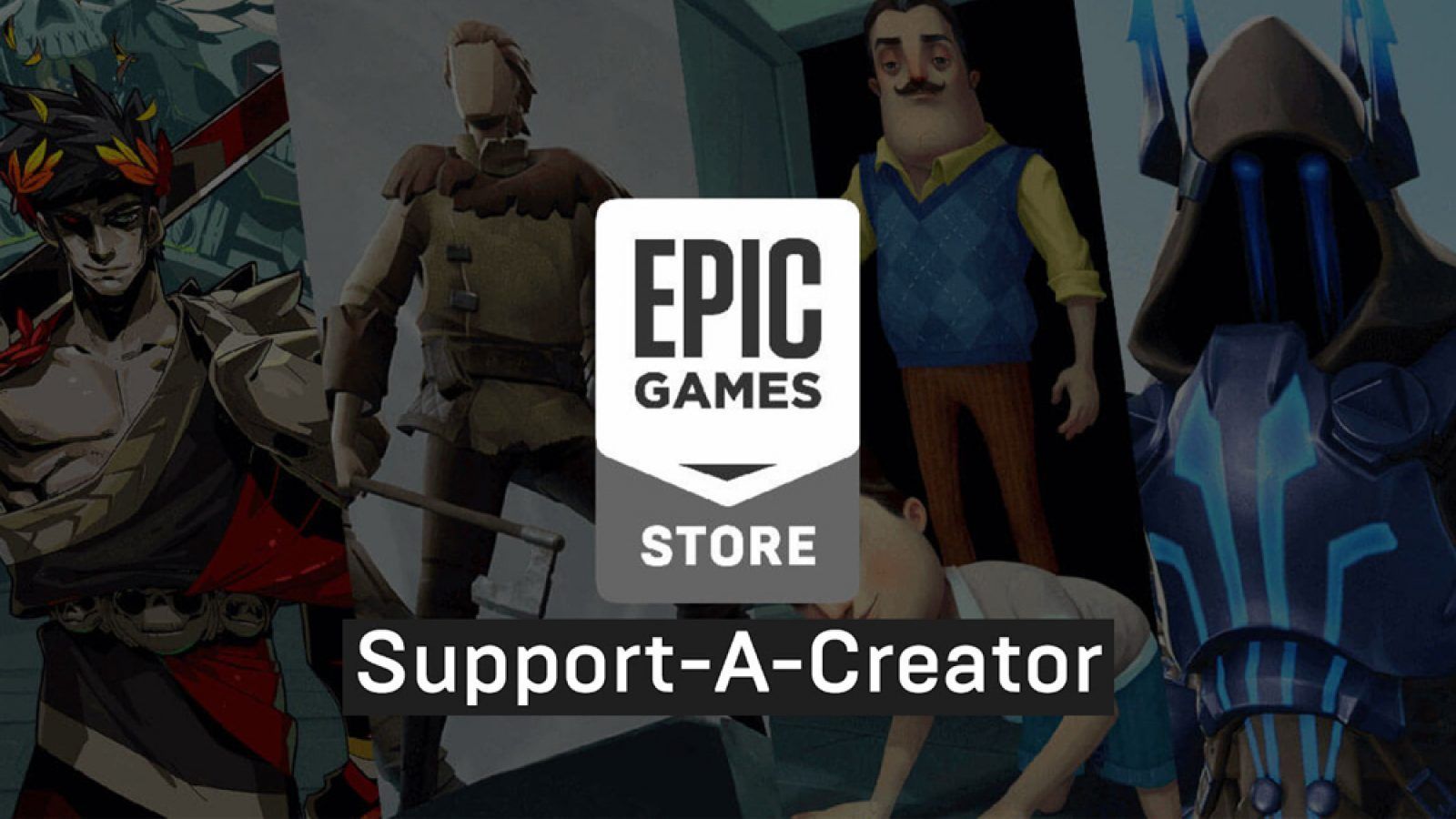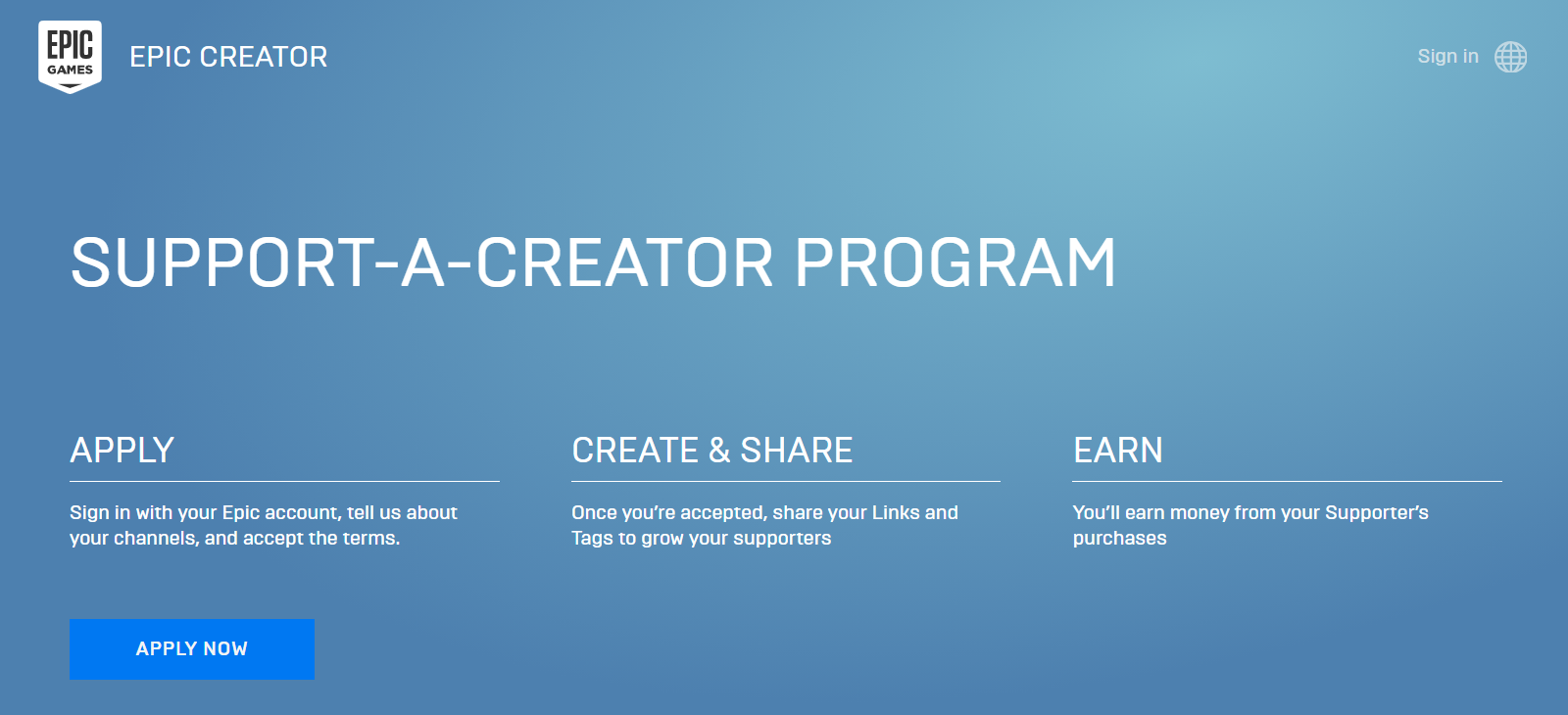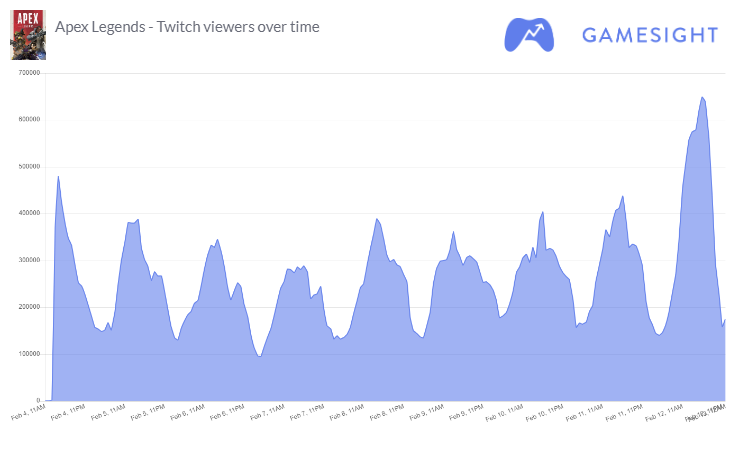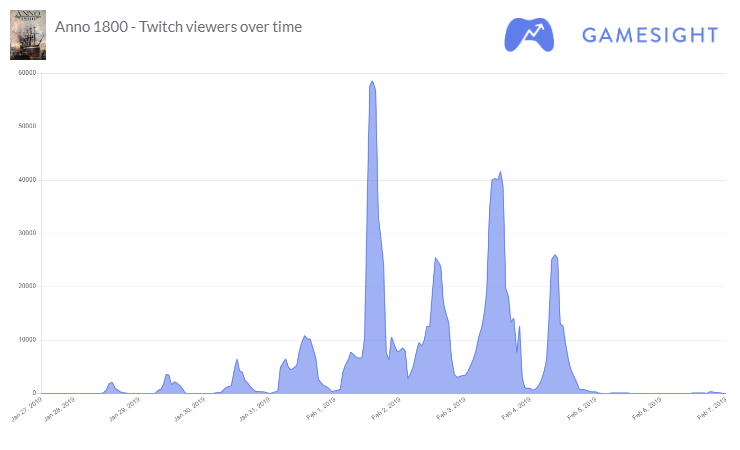Affiliates vs. Sponsorship: Which, How, and Why?
Working with content creators isn't optional for game publishers. Knowing the different forms that might take, and which is right for your game, is essential.

Working with content creators isn't optional for game publishers. Knowing the different forms that might take, and which is right for your game, is essential.
The big story of last week was the launch and success of Apex Legends, but something that flew under the radar was the announcement that Epic Games would be temporarily quadrupling the payouts through their “Support a Creator” program. Launched initially as a one-time event this past October, the monetization system for Fortnite creators proved to be such a massive success for the community, and one would imagine Epic's bottom line, that it was made permanent by December.
Audiences love to support their favorite streamers and creators. In a space where the entertainers are independent and focused on community, the sense that the content is directly made possible by the contributions of the viewership enhances everything about the experience that makes it unique. It makes community members feel closer to each other and the creator themselves. They’re a team, and being able to contribute as a member of that team feels great.
That’s why official programs built by developers and publishers themselves can be such a powerful tool, not just for monetization but for building out a strong, engaged community for their games. And yet, it’s important to understand the different forms these programs can take, and how to communicate the details effectively. Today, we’re going to discuss the two main types of influencer programs and what sets them apart from each other, beginning with…
Affiliate Programs

Even though the name of Epic’s influencer system is called the “Support-A-Creator Program,” it lives at epicgames.com/affiliate, because that’s a better representation of what it really is: an affiliate program.
These systems have actually been around for a long time, and channel owners on many platforms have been utilizing them since the early days of content creation. How it works is, at its core, very simple:
1. Creator shares a link to the purchase of a particular product or service.
2. A viewer uses that link and makes said purchase.
3. The creator gets a percentage of that sale.
In the world of streaming, this has usually manifested as Amazon links. Viewers are often interested in the hardware creators use, the components of their stream machine, their cameras and microphones, their capture cards or gaming mice. Listing affiliate links to these products on Amazon or Newegg has long been a simple way for creators to add to their monetization portfolios.
These systems have always lent themselves more towards the marketing and sale of hardware and physical peripherals. Astro Gaming, for example, makers of headsets and other audio hardware, have a successful affiliate program where creators can receive 5% of every referred sale. Similar programs for games themselves, meanwhile, haven’t been as common. Green Man Gaming has a system in place for affiliate partners, with the particulars seemingly negotiated between the platform and publishers on the back end, but this is more the exception than the rule, and as GMG lacks the popularity of the larger platforms out there like Steam, its value to publishers and creators has always been somewhat limited.
That’s why, while Epic’s partners are still clearly “affiliates,” much of what they’re doing is still unique in the space. I can’t remember another game building an affiliate program directly into their in-game store, much less one with the transcendent popularity of Fortnite, a title also built solidly around the foundation of streaming. That unique circumstance has led to an affiliate program that doesn’t simply cut creators into sales, it actually likely increases overall sales as well by tapping into the audience’s desire to support creators they love.
Most affiliate links, however, are welcome but unreliable sources of income for creators. They’re primarily built around things you can only buy once, things you don’t buy on a whim. Applying that strategy to microtransactions within a game where everybody has a favorite streamer to watch, a favorite smaller community with which to engage, means that popular creators might actually be able to make sustainable income from these links alone.
But, it’s important to note that this is an outlier. Epic also announced that they were expanding this program to their entire game store, and it remains to be seen whether this more traditional program will be any more successful than the attempts of their competitors. For most affiliate programs, the point is to engage smaller audiences in a way that requires limited management. A streamer who regularly hits an audience of 40 viewers might not represent the ultimate opportunity for getting your game out there, but if you have hundreds or thousands of such channels, in aggregate, giving them a way to push their audience towards your product can still be very valuable. As Epic is proving, creative applications of these types of programs can still yield surprising dividends, and it’s important to think whether there’s a unique way to apply those lessons to your games. Still, for the most part, affiliate programs are more about engaging with smaller audiences viewing smaller streamers.
Now, if you’re looking to tap into the real power of content creators with sizable audiences, you might instead think about investing in…
Creator Sponsorship Programs
While affiliates are paid only when their links lead directly to a sale, sponsored creators are rewarded for their participation. What this means can actually run a wide array of possibilities, from simply giving a creator free access to your title to a full-blown paid contractor agreement, paying someone to play your game for their audience. Pretty much everything between those possibilities is, in one form or another, a sponsorship, and it’s the best way to reach sizable audiences that are actively engaged by top-flight influencers.

If Epic is the example of extreme success for an affiliate program, the sponsorship equivalent, right now, would be Apex Legends. We’re less than two weeks away from the game’s surprise announcement, and it’s already reaching player-base milestones it took Fortnite months to reach. This incredible success has been built almost entirely through a leveraging of Twitch, in particular by engaging with top-level streamers.
Prior to the game’s surprise announcement, the team at Respawn and EA brought creators in for a special preview play session, and it went well.
“We knew we had something special, because the Respawn team knows how to create a good shooter,” EA marketing executive Alexandre Scriabine said on LinkedIn. “But when we welcomed some of the biggest streamers and YouTubers in the world last week in Hollywood to try the final game and realized they all wanted more and more of it, we just couldn't wait to release it to the world.”
While the public still didn’t even know the game existed, letting influencers in on the secret and getting the game into their hands already got the hype machine rolling, and told EA they were on the right track, that the right creators were excited to be a part of Apex’s launch. It also draws into focus one of the benefits of sponsorship that affiliates usually can’t provide: they help you build community. Affiliate links are a great way to engage a strong community that already exists, but when you’re building out a product and you want the community to grow around it, working directly with creators allows you, to an extent, to take some measure of control over that community, to guide it in the right direction instead of simply seeing how it grows organically.
This is exactly what happened with Apex Legends. Once the game was revealed, creators like Dr. Disrespect and Lirik, people who had been let in on the secret and were already excited to play there part in pulling back the curtain, were playing the game live. Many or most of them had the telltale #ad tag in their stream titles, letting you know that this, too, was a part of EA and Respawn’s rollout plan. By investing in the right places, the right people, Respawn was able to choose which preexisting communities would be pointed towards Apex from day one. They were able to pick which audiences would be watching, which communities they wanted to use to build their own. By tapping into these communities, they managed to shoot Apex Legends to the top of the Twitch charts, a spot they took in less than an hour and have not relinquished since, and also built out an online community of players and creators, from scratch, that would put titles that have engaged in years of community development to shame. Two weeks in, now, it seems to still be going strong.
We don’t know what these creators have been or are being given for their participation. It helps that the game is genuinely a blast to play and streamers are having a great time showing it off. But, we do know that, if you’re going to try to work with the biggest names on the platform, you’re going to have to give them more than a slice of conversions from an affiliate link or the promise of free in-game perks.
That’s not to say that sponsorship is only for the biggest of the big. As stated above, even simply giving a free copy of your game to a creator so they can show it off falls into the category of sponsorship, and there’s a lot of room between that and Apex’s enormous launch. Engaging with smaller, but still active streamers is often a great strategy when trying to build a player-base for a more niche title, in which case it’s all about identifying the right creators and figuring out how to best support them and their creative endeavors.

The recent closed beta of Anno 1800 is informative here. Technically, there were no sponsorships at play when the preview went live, though one could consider access to the beta itself as a “reward” if they wanted to stretch definitions a little bit. Still, because it was a closed beta, players had to apply for access, and this enabled Blue Byte and Ubisoft to pick and choose creators from that pool who would best help them build out a strong community. City-building games have a long history on Twitch, but their viewership is still somewhat niche. It won’t pull in the numbers of a MOBA or battle royale, but that doesn’t mean there isn’t an actively engaged audience of genre fans waiting to both watch their favorite creators play and take a turn themselves.
One could see how the application process would allow the publisher to build a list of interested creators and investigate which would be best for Anno’s future. Anno managed to shoot towards the top of the Twitch charts during its closed beta via the strength of the communities they’d chosen, and now, moving forward, they know exactly which creators to work with should they choose to try a paid sponsorship program for the game’s proper launch. Anno 1800 isn’t Apex Legends, but it doesn’t have to or want to be; it can still carve out a strong following by working with the right creators, and sponsorships are a great tool at their and any game’s disposal.
Communication is Key
So which is right for your game: affiliates or sponsorships? There’s no straight answer. For many games, an affiliate program is difficult to implement. You need a distribution platform to play along, or a microtransaction store over which you have complete control and a strong community of engaged users. But, when viable, it’s rarely a bad option to have at your disposal. It will never replace, however, the utility of a sponsorship program, a means by which you can exhibit much higher levels of control regarding the development of your game’s community and brand. More important than picking one over the other is knowing that working with content creators is an essential part of any modern game’s success, and these systems give form and efficiency to those relationships.
And that’s an important final note, particularly of sponsorships: these are relationships. Developers and publishers don’t just rely on content creators to build hype for their products; those same content creators also rely on these relationships to help maintain a sustainable living. Creators are making less from traditional sources of revenue like ad-shares than ever before, and a robust ecosystem of sponsorships and affiliate relationships is a pivotal part of making sure this world of streamers and YouTubers sticks around.
It’s for that reason that communicating the details of your affiliate or sponsorship program is so important. Someone who is interested in working with you to build an audience for your game shouldn’t have to wonder what their specific obligations are or would be, what their compensation structure would look like and how it would be delivered, or how much actual interaction or support they’ll have with the development or marketing team as a part of their relationship. When there’s mystery or ambiguity, it yields chaos, and you can end up doing real damage to your brand due to misunderstandings. Make sure information about how you work with creators is clear, concise, and readily available. Know your terms, things like 'affiliates' and 'sponsors' and 'partners', and use them correctly and explicitly. Putting yourself in the best position is as about laying that foundation for bringing people in and avoiding trouble at the same time. In the end, no matter how you choose to work with creators, if you do so openly, in the right way, you’ll reach a better, wider, more engaged audience without shooting yourself in the foot.
Follow us on Twitter and LinkedIn for all the latest blogs, announcements, and game marketing news from the team at Gamesight!

